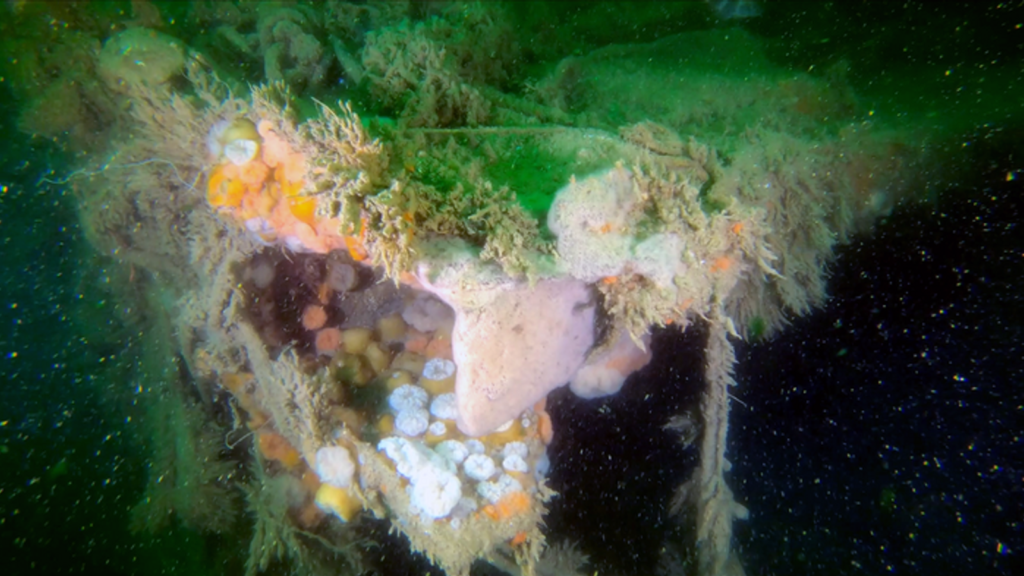Nazi boat sunk by the British during WWII is still polluting the sea | Science & Tech News

A Nazi boat sunk by the Royal Air Force during the Second World War is still polluting the ocean floor, scientists have found.
The V-1302 John Mahn is one of thousands of ship and aircraft wrecks at the bottom of the North Sea, which is also home to millions of tonnes of shells, bombs and other munition from both world wars.
Mahn was once a German fishing trawler, before being requisitioned by Hitler’s forces for use as a patrol boat.
It was sunk by the British off the Belgian coast during the Channel Dash of 1942, when German battleships needing repairs were escorted from the port of Brest in northwestern France all the way back to their homeland.
While the likes of Mahn were sunk, far more important battleships were managing to get all the way to Germany.
This was considered an embarrassment for British forces and Winston Churchill ordered an inquiry.
Eighty years later and Mahn’s demise is still proving costly to the microbiology and geochemistry of the ocean floor where it rests, as it leaks hazardous pollutants such as explosives and heavy metals.
A research team at Ghent University made the discovery as part of its North Sea Wrecks project, to see how the remnants of the world wars are affecting the natural world today.
‘We should not forget shipwrecks can be dangerous’
While there is great public interest in the discovery of shipwrecks due to their historical value, researchers say the potential environmental impact is often overlooked.
In the case of Mahn, samples were taken from the sediment nearby and the vessel’s steel hull.
Varying degrees of concentrations of toxic pollutants were found, including nickel, copper, arsenic, explosives, and chemicals that occur naturally in coal, crude oil and gas.
The USS Johnston was among the vessels sank during the Second World War. Pic: US Navy
Researcher Josefien Van Landuyt said: “While wrecks can function as artificial reefs and have tremendous human story-telling value, we should not forget that they can be dangerous, human-made objects which were unintentionally introduced into a natural environment.
“Today, new shipwrecks are removed for this exact reason.”
Ms Van Landuyt warned that the findings, published in Frontiers In Marine Science, were just the tip of the iceberg.
Read more science and technology news:
Meta ordered to sell GIF library in ‘final decision’ by UK watchdog
Strict or harsh parenting ‘could increase a child’s risk of depression’
TikTok to introduce adults-only option for live broadcasts
It is estimated that shipwrecks from the world wars around the globe collectively contain between 2.5 million and 20.4 million tonnes of petroleum products.
“Although we don’t see these old shipwrecks, and many of us don’t know where they are, they can still be polluting our marine ecosystem,” added Ms Van Landuyt.
“In fact, their advancing age might increase the environmental risk due to corrosion, which is opening up previously enclosed spaces. As such, their environmental impact is still evolving.”
Recent Posts
- The Power Shift: How Travelers Are Transforming the Future of Business Travel
- Universal Orlando Resort reveals first pictures of new Harry Potter ride
- Adaptive Leadership in an Era of Experiences
- Wanderland London Releases first-of-its-kind Kids Hospitality Report
- EasyJet unveils Cape Verde flights and packages for summer 2026






Recent Comments